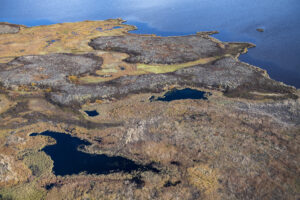Woodwell and Wellington talk climate risk
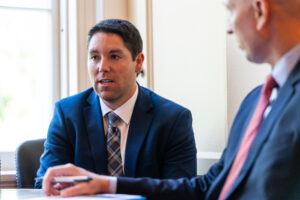
When company leaders are presented with predictive maps showing the increased prevalence of drought, wildfire or flooding in their area due to climate change, one of the most common reactions is “Where did you get this information from?” according to Chris Goolgasian, director, climate research and portfolio manager at Wellington Management which has about US$1.4 trillion in assets under management.
While efforts to mitigate global warming are increasingly widespread, Goolgasian said communities and businesses around the world are under-informed and largely unprepared to adapt given a 1.5 degree Celsius increase in average temperatures is almost certain.
In a panel discussion at Conexus Financial’s Sustainability in Practice Forum at Harvard University, Goolgasian spoke with Zach Zobel, a scientist at the Woodwell Climate Research Center, about the ongoing partnership between Woodwell and Wellington.
Northeast drought endangers Massachusetts’ cranberry harvest
Another year of erratic weather means cranberry farmers are facing slim margins and tough decisions.
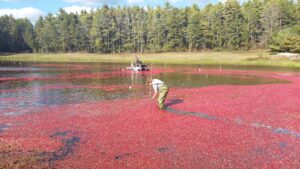
The ancient subarctic forests at risk from climate change and war
The boreal ecosystem that covers swaths of Russia and North America is nearing a dangerous tipping point
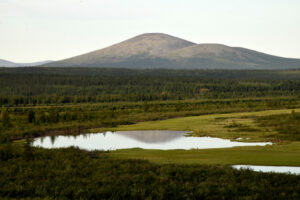
In summer 2019, the Cambridge physicist Gareth Rees flew into Yakutsk to meet a team of Russian scientists. The far eastern Siberian port is known as the coldest city on Earth, but that year it was simmering under a heatwave. Together the researchers drove deep into the region’s sprawling forests on a road paved by gulag prisoners.
The British and Russian scientists were on a mission to study how the boreal forests of the subarctic region are transforming with climate change. Together they measured 2,000 trees, sweating under the heavy clothes protecting them from crowds of insects.
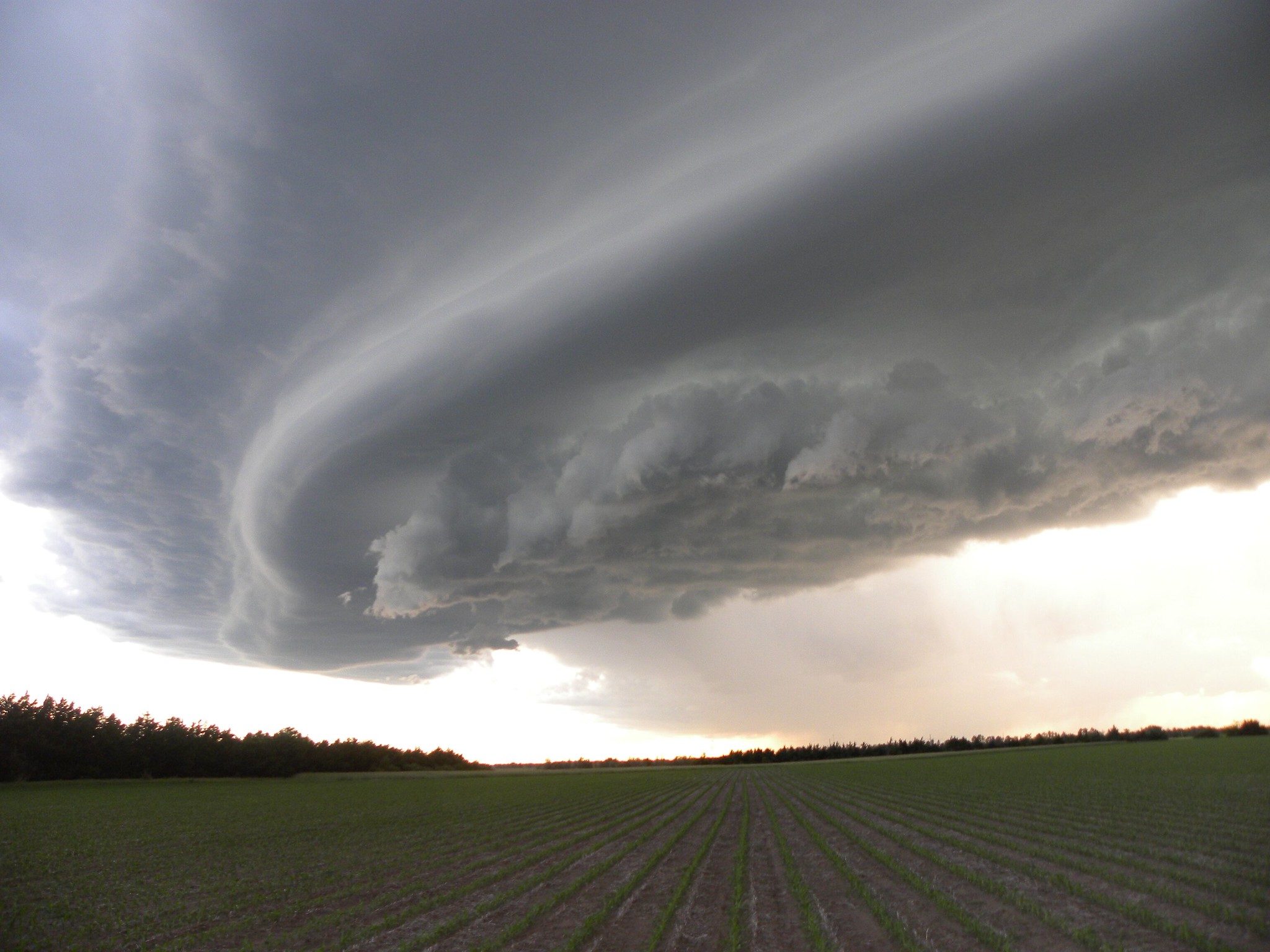
A sudden flip in weather conditions—from a long hot and dry period to a parade of storms, for example, or from abnormally mild winter temperatures to extreme cold—can cause major disruptions to human activities, energy supplies, agriculture, and ecosystems. These shifts, dubbed “weather whiplash” events, are challenging to measure and define because of a lack of consistent definition. A new study demonstrates an approach to measuring the frequency of these events based on rapid changes in continent-wide weather regimes.
The study indicates that, while the frequency of whiplash events in recent decades has not changed substantially, future model projections indicate increases will occur as the globe continues to warm under a thicker blanket of greenhouse gasses. In particular, the researchers find whiplash will increase most during times when the Arctic is abnormally warm, and decrease when the Arctic is in a cold regime—something that will occur less often as the planet warms.
Examples of weather whiplash during 2022 so far include a long, hot, drought in western U.S. states during early summer that was broken by record-breaking flash flooding; exceptionally wet and cool conditions during June in the Pacific Northwest replaced by a heat wave in July; a record-warm early winter for most south-central states followed by a cooler-than-average January and February; and a spell of 67 consecutive hot, dry days in Dallas, TX, broken by the heaviest rains in a century.
“The spring and summer of 2022 have been plagued by weather whiplash events,” said lead author, Dr. Jennifer Francis, Senior Scientist at the Woodwell Climate Research Center. “A warming planet increases the likelihood of longer, more intense droughts and heat waves, and we’re also seeing these spells broken suddenly by heavy bouts of precipitation, which are also fueled by the climate crisis. These sudden shifts are highly disruptive to all sorts of human activities and wildlife, and our study indicates they’ll occur more frequently as we continue to burn fossil fuels and clear-cut forests, causing greenhouse gas concentrations to rise further.”
Co-author Judah Cohen, Principal Scientist at Verisk AER noted that these phenomena are tightly linked to regional warming in the Arctic.
“We know the Arctic region is experiencing the most rapid changes in the global climate system. Evidence is growing that these profound changes are contributing to more extreme weather events outside the Arctic, and this influence will only increase in the future,” said Dr. Cohen.
Why Arctic fires are releasing more carbon than ever
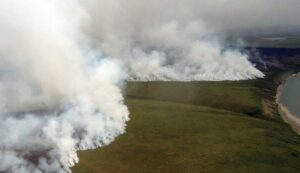
Smoke from hundreds of wildfires darkened skies over the Alaskan Interior this summer, with the state experiencing its fastest start to the fire season on record amid hot and dry conditions.
Tens of thousands of lightning strikes ignited the majority of active fires, according to the Bureau of Land Management Alaska Fire Service. By late August, more than 3 million acres had burned across the state—roughly triple what’s seen in an average year, but no longer unusual in a warming world.
With climate change raising Arctic temperatures faster than the global average, wildfires are shifting poleward where the flames blaze through boreal forest and tundra and release vast amounts of greenhouse gases from the carbon-rich organic soil.
What’s New?
The Cerrado is a tropical savanna located just southeast of the Amazon rainforest. This biome is a patchwork of forests, savannas, and grasslands, nearly as biodiversity rich as the Amazon yet suffering more due to lax environmental protections. Over 46% of its original land cover has already been cleared for crops or pastures. A recent study assessed the impacts of this conversion on the temperature and water cycling in the region.
The study found that clearing of natural ecosystems resulted in increased land surface temperatures and reduced evapotranspiration — water evaporated to the atmosphere both from soils and as a byproduct of plant growth. Across the biome, land use changes caused a 10% reduction in water being cycled into the atmosphere annually, and almost 1 degree C of warming. Where native savanna vegetation was cleared, temperatures increased by 1.9C and the water recycled to the atmosphere decreased by up to 27%. These changes don’t take into account the additional effects of atmospheric warming from greenhouse gas emissions.
The study also projects forward three potential future scenarios based on different levels of environmental protection. The worst-case scenario assumes an additional 64 million hectares of both legal and illegal deforestation, which would leave just 20% of native vegetation in the Cerrado by 2050. If illegal deforestation is prevented but legal deforestation still advances, an additional 28 million hectares of deforestation would continue to warm and dry out the region. Only in the most optimistic scenario, with enforced zero deforestation policies and restoration of over 5 million hectares of illegally cleared vegetation, would the impacts of past clearing begin to reverse.
“If we continue down this path of weakening environmental policies, we’re probably heading towards an uncontrolled increase in deforestation,” says Ariane Rodrigues, researcher at the University of Brasilia and lead author on the paper. “As a result, we could reach almost 1 C of temperature increase by 2050 from land use change alone. If we add the estimated temperature increase from global greenhouse gas emissions, we will have a critical situation for food production, biodiversity, water and wildfire risk, affecting areas located way beyond the biome’s limits.”
Understanding Land Use in the Cerrado
Incentives for large-scale commercial agriculture in the Cerrado date back to the 1970s. Despite its high biodiversity, only 11% of the Cerrado is protected and technological advancements provided favorable conditions for agriculture to expand rapidly.
The half of the biome that remains unconverted is considered prime agricultural land. The Cerrado alone is responsible for 12% of global soybean production and 10% of global beef exports. Growing demand for these agricultural products is pushing farmers and ranchers to expand into the Matopiba region in the Northeast Cerrado — one of the largest remaining areas of undisturbed native vegetation.
Hotspots of reduced evapotranspiration and increased temperatures can already be seen in areas of Matopiba with intensifying agricultural activity. This means that farms will rely even more heavily on irrigation to combat drought, a strategy made less viable by the warming and drying caused by agriculture itself.
“That is the driest portion of the Cerrado, where there’s the most climate risk already,” says paper co-author and Woodwell Water program director, Dr. Marcia Macedo. “You can see that in the data — it’s getting hotter, and there’s less evapotranspiration, so we are really intensifying conflicts in areas that are already on the edge.”
What this Means for Protecting the Cerrado
The results of the paper highlight the urgent need for a paradigm shift that values the additional services the Cerrado provides beyond just crop production. Not only does it house unique ecosystems, but it plays a pivotal role in modulating the climate of the region. In the best-case scenario evaluated by the paper, zero-deforestation and restoration policies could avoid extensive warming and drying and begin compensating for the past transformation of Cerrado landscapes. Continued conversion of natural vegetation will jeopardize both biodiversity and agricultural stability in the Cerrado, as crops struggle to be productive under hotter and drier conditions.
Already, conflicts over water usage and irrigation are occurring in western Bahía state. As the region warms and dries, competition for a scarce resource will become more common and large-scale agriculture will become much less viable.
“We’re making some risky decisions in terms of land use,” says Dr. Macedo, “We’re losing a lot for short term gains in crop production, often in areas that will struggle to sustain large-scale agriculture as climate changes.”
The Alaskan wilderness reveals the past and the future
The oil flows more slowly, the climate changes more quickly
